Holy Trinity Anglican Church
Brighton Road, Balaclava
First organ, rem to Brunswick Methodist Church, Sydney Road.
Present organ B 1883 George Fincham. 3m, 25spst (2 prep.for), 4c, tr.
Reb 1960 Geo Fincham & Sons. 3m, 26spst, 13c, elpn.
Gt: 8.8.8.4.2-2/3.2. [III.8. prep.for] Sw: 16.8.8.8.4.2.III.8.8.
Ch: 8.8.8.4.2. Ped: 16.16.8.8.5-1/3.4.
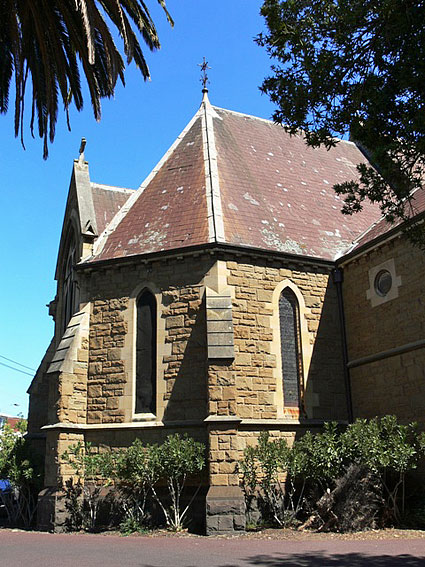
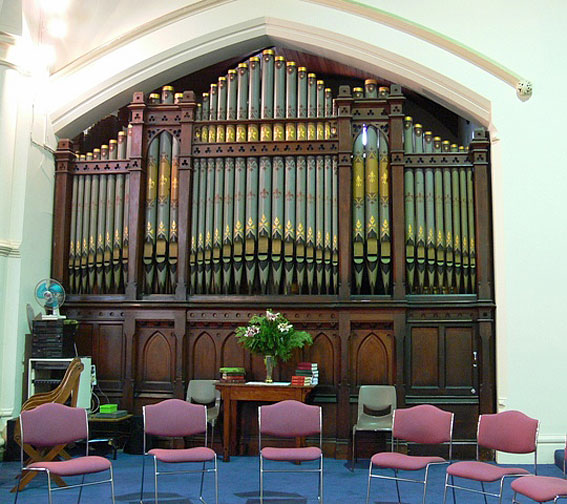
The site of Holy Trinity Church was gazetted in 1866 and the first church, of timber, designed by F.M. White, was opened in 1871.
The present church was designed by Reed & Barnes in the firm’s characteristic French Gothic style, very similar to St Mary’s Church, Caulfield and Toorak Presbyterian Church. It was erected in 1882-83 at a cost of £7675 but without the very tall tower, with elongated belfry stage, and spire. Constructed in Barrabool Hill freestone with Waurn Ponds dressings, the building consists of a five-bay nave with diminutive circular clerestory windows, transepts and apsidal chancel, with organ chamber to the left and vestries to the right. The circular baptistery, with conical roof, placed to the right hand side of the main façade, is a distinctive feature. The spacious interior includes a stone reredos with flanking gables and impressive memorial stained glass windows by Gibbs & Howard, Charlotte Street, Fitzroy Square, London (signed by the artists) and Clayton & Bell, London, together with the local artists Mathieson Studios and Alan Sumner and the Hungarian-born artist Bela Kozak. The presence of fine stained glass and memorials is testimony to the prominent families and wealth once to be found in the area.
The first organ, a single manual instrument of seven stops, was built by George Fincham and opened in 1871. Additions were made in 1876 by Fincham and in 1883 it was sold to the Methodist Church, Brunswick, where the pipework survives as the Swell division of an organ built by C.W. Andrewartha in 1942. The elaborate casework sadly has been destroyed.
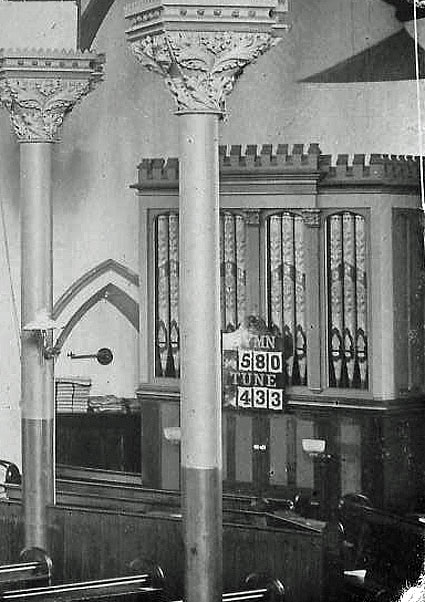
The first organ built by George Fincham for Holy Trinity Church, Balaclava
that later went to the Methodist Church, Brunswick.
This comes from a postcard of the interior of the Brunswick church.
The present organ was built by George Fincham to the design of the incumbent, The Revd Dr G.W. Torrance, who was an eminent musician as well as clergyman. Torrance acted as an advisor for the installation of many Fincham organs and gave many of the opening recitals. This was a three-manual of 23 speaking stops, with the Great Mixture and Trumpet prepared for later addition. The cost was £690. The instrument was placed in a spacious chamber with openings to the chancel and north transept, with the mechanical action console sited on the south side of the chancel, with the trackers running in a special brick-lined tunnel beneath the floor. This enabled Dr Torrance to act as the organist as well as conducting the service.
In 1960 the instrument was rebuilt with electro-pneumatic action and a new detached stopkey console. The key compasses were extended at this time, the pitch lowered to standard, the Choir Organ enclosed in a swell box and the shutters of the Swell Organ converted to vertical operation. Sadly the original console and its mechanisms were discarded, but fortunately all of the original pipework, windchests, casework and façade pipes survive. The instrument benefits from a spacious organ chamber with excellent tonal egress.
The original specification was:
GREAT |
8 pd8 8 4 2-2/3 2 III 8 16 8 pd8 8 4 2 III 8 8 8 8 8 4 2 16 16 8 |
pd prepared-for prepared-for pd [17.19.22] (originally unenclosed) metal: transept façade |
Compass: 56/30
2 composition pedals to Great
3 composition pedals to Swell
Mechanical key and stop action
In 1960, several stops were renamed, and the Pedal Organ had the following stops provided through extension of existing material:
Bass Flute 8 from Bourdon 16
Octave Quint 5-1/3 from Bourdon 16
Fifteenth 4 from Principal 8
Organists have included the first Vicar, The Revd Dr George Torrance, T. Brentnall, S.P. Needham, H.J. Inge (1888-1896), J.N. Stevens, Arthur E.H. Nickson and Miss Cross.
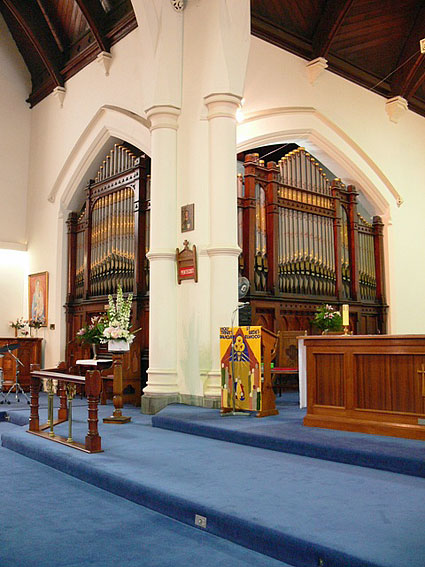 |
 |
|
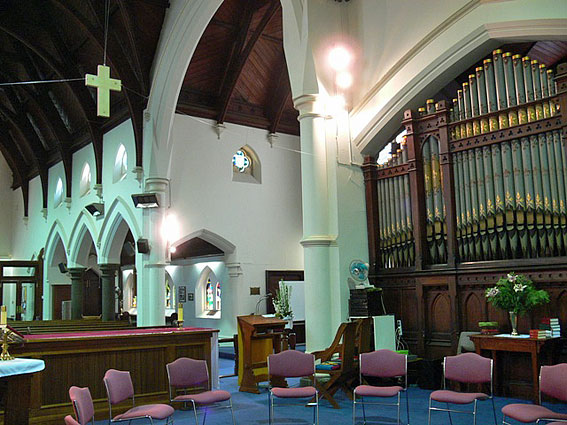
|
||
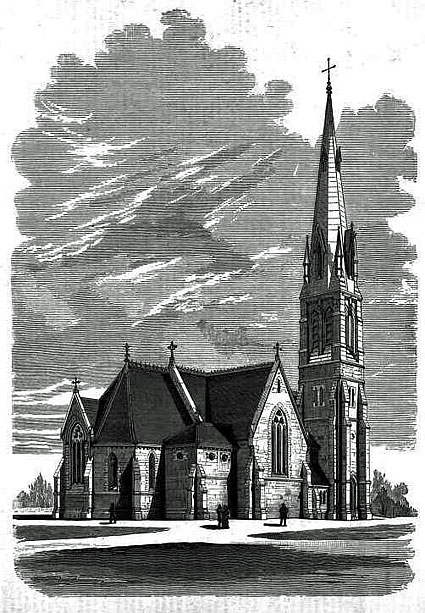 |
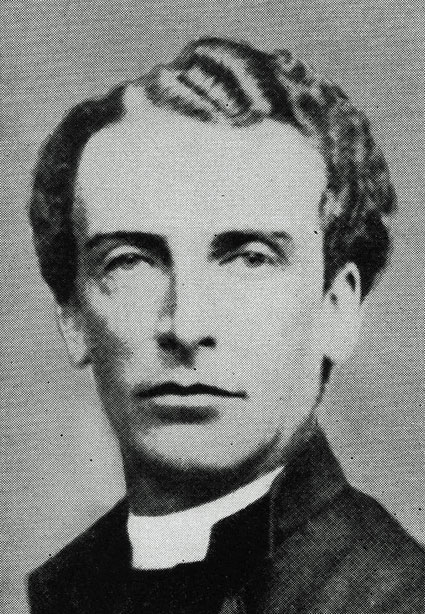 Dr George Torrance |
|

|
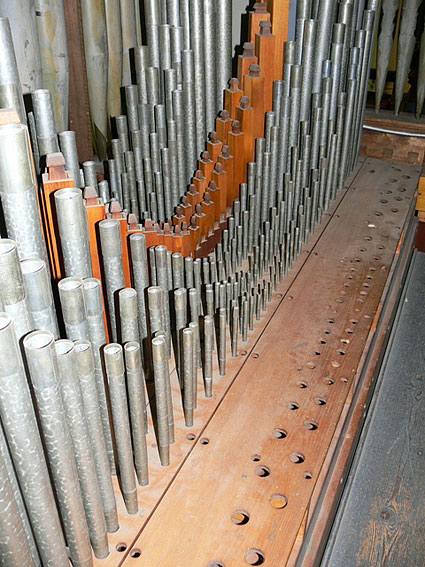 |
|
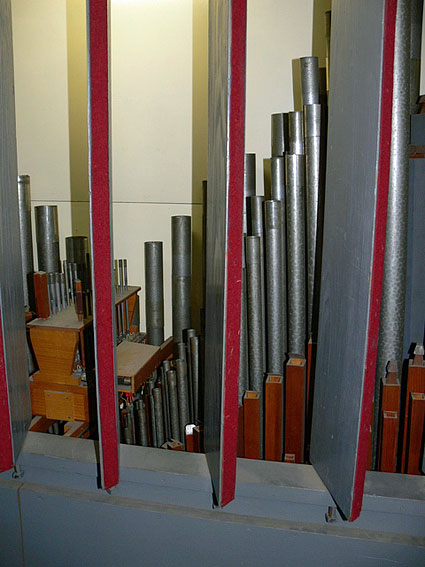
|
||
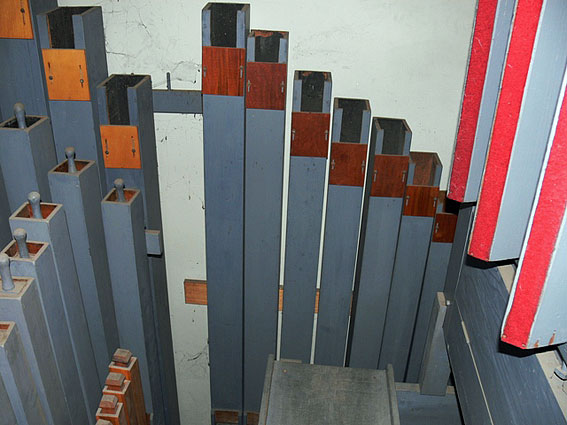
|
||
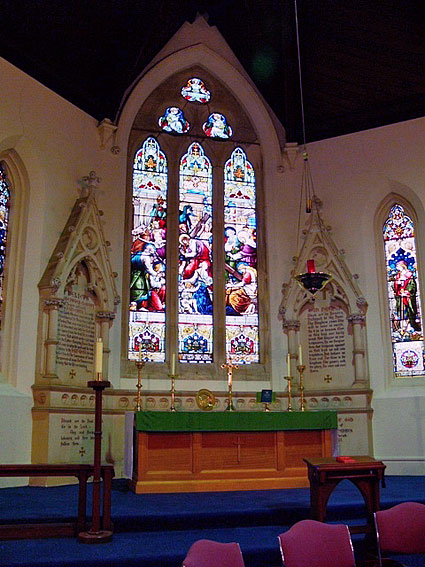 |
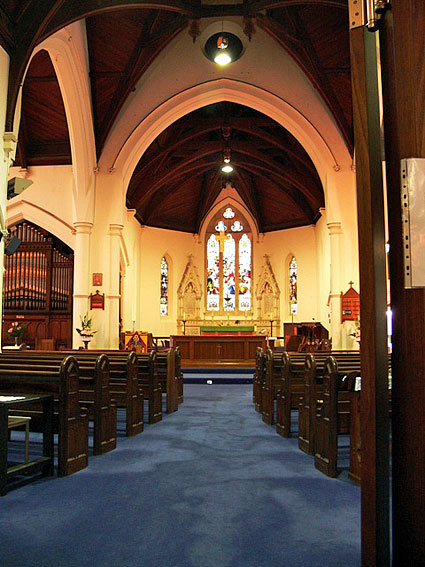 |
|
 |
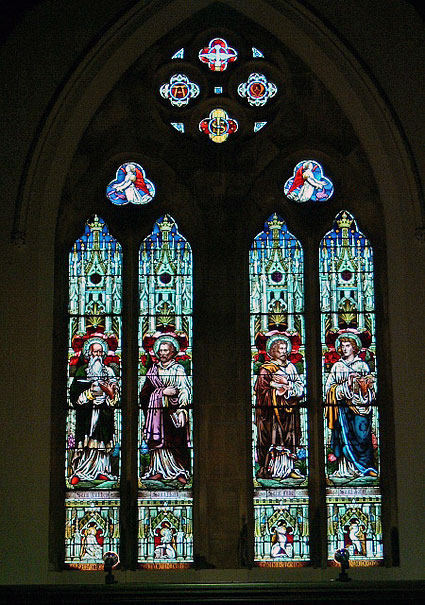 |
|
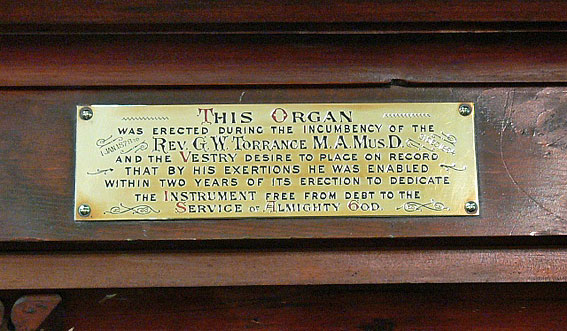
|
||
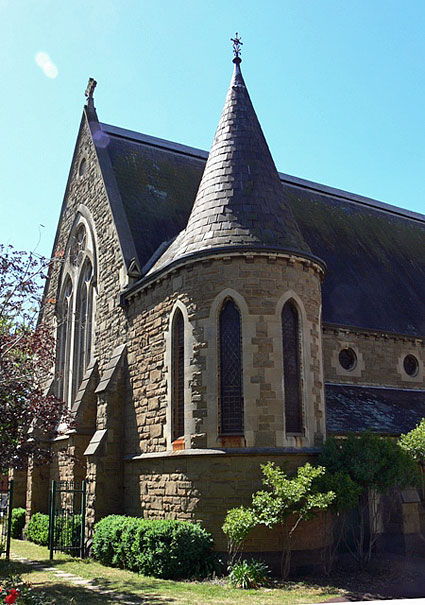
|
||
Photos: JRM (Nov 2008)
W. Kerry, History of Holy Trinity Church, Balaclava, 1871-1921
The Spirit of St Kilda website: http://www.skhs.org.au/SKHSchurches/Holy%20Trinity%20Church.htm
Victorian Churches, edited by Miles Lewis. East Melbourne; National Trust of Australia (Victoria), 1991. p.84
E.N. Matthews, Colonial Organs and Organbuilders. Carlron: Melbourne University Press, 1969, pp 121-122
Jenny Zimmer, Stained Glass in Australia. Melbourne; Oxford University Press, 1984
John Maidment
12 November 2008